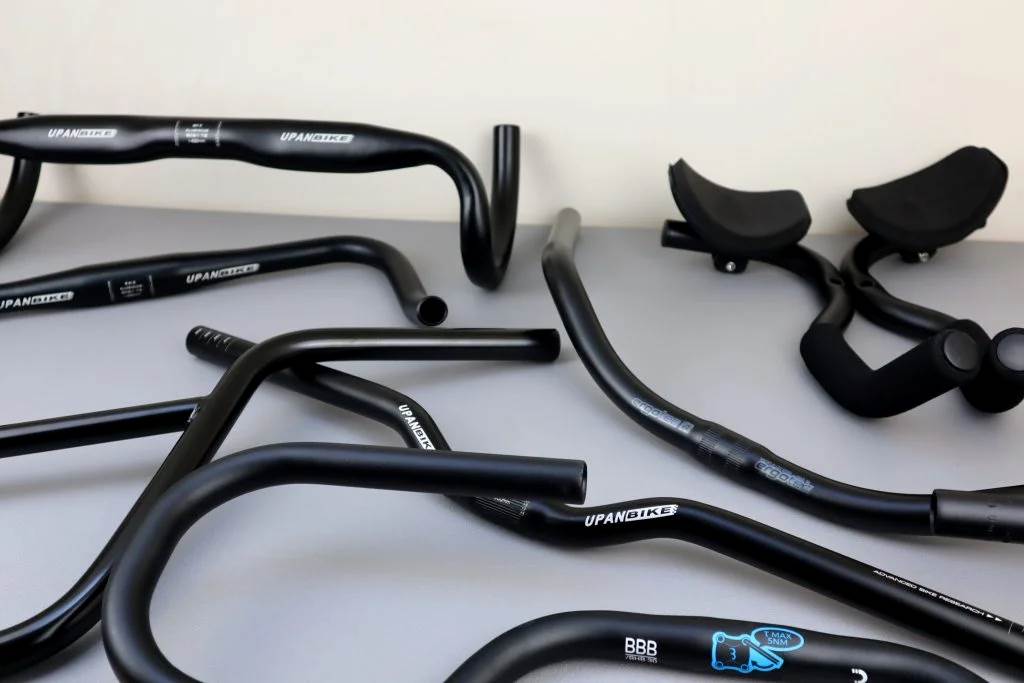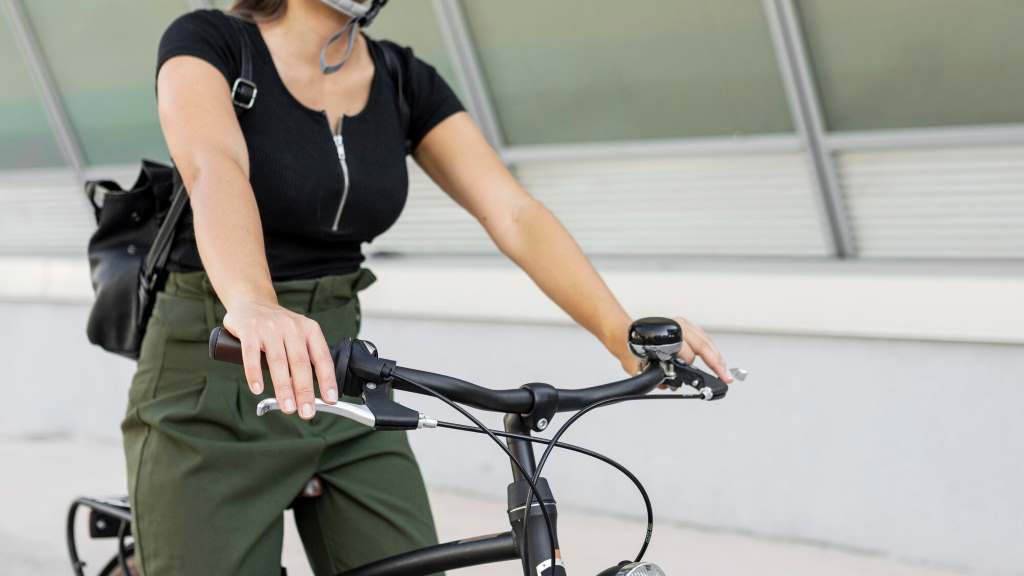In the realm of cycling, where speed and efficiency often reign supreme, comfort is frequently relegated to an afterthought. Yet, for many cyclists, especially those seeking leisurely rides, commuting convenience, or relief from back and neck strain, an upright riding posture is paramount. This posture, which minimizes stress on the body and enhances visibility, is largely dictated by the type of handlebars chosen. This article delves into the world of bicycle handlebars designed for sitting upright, exploring their various styles, benefits, and how to select the perfect bicycle handlebars for your needs.
Understanding the Importance of an Upright Riding Posture
Before diving into handlebar specifics, it’s crucial to understand why an upright riding posture is so desirable. Unlike a forward-leaning posture favoured by road cyclists seeking aerodynamic advantage, an upright position offers several crucial benefits:
- Reduced Back and Neck Strain: By minimizing the forward bend, pressure on the spine and neck is significantly reduced, preventing discomfort and potential injuries during longer rides.
- Enhanced Visibility: An upright posture provides a broader field of view, allowing riders to better observe their surroundings, particularly important in urban environments.
- Improved Comfort: For casual riders and commuters, comfort is paramount. An upright position offers a relaxed, enjoyable riding experience, and adding a cooling ventilation bike seat can further enhance comfort by promoting airflow and reducing pressure on longer rides.
- Increased Control: In some situations, especially when navigating crowded areas or uneven terrain, an upright position can offer better control and maneuverability.
The Variety of Perfect Bicycle Handlebars for Upright Riding

The market offers a diverse range of handlebars specifically designed to promote an upright riding posture. Here’s a comprehensive overview of the most common types:
- Upright City/Dutch Handlebars: These handlebars are the quintessential choice for achieving a truly upright position. Characterized by their significant rise and sweep, they bring the hands closer to the rider, creating a relaxed and comfortable posture. They are commonly found on city bikes, Dutch bikes, and comfort-oriented bicycles. These handlebars often feature a significant “backsweep” which means the grip portion of the bar angles back towards the rider. This greatly reduces strain on the wrists.
- Cruiser Handlebars: Similar to city handlebars, cruiser handlebars offer a wide, swept-back design, reminiscent of classic beach cruisers. They are often wider and have a more dramatic sweep, further enhancing comfort and stability. Cruiser handlebars are optimal for leisurely rides on flat terrain, prioritizing comfort over speed.
- North Road Handlebars: A more versatile option, North Road handlebars offer a moderate rise and sweep, providing a balance between comfort and efficiency. They are suitable for a variety of riding styles, from commuting to leisurely rides on varied terrain. These handlebars are a good middle ground for those who want an upright position, but still want some ability to lean forward for increased power in certain situations.
- Trekking/Butterfly Handlebars: These handlebars offer multiple hand positions, allowing riders to adjust their grip and posture throughout their ride. They are ideal for long-distance touring and commuting, providing versatility and comfort. The butterfly bar allows for a wide range of hand positions, preventing hand and wrist fatigue. This is especially useful for long rides.
- Riser Handlebars: While not exclusively designed for upright riding, riser handlebars can be used to achieve a more upright position when combined with a shorter stem. They offer a slight rise, raising the hands and reducing forward lean. They are common on mountain bikes, but can be used on hybrid and commuter bikes as well.
Factors to Consider When Choosing Handlebars
Selecting the right handlebars for an upright riding posture involves considering several factors:
- Desired Riding Posture: Determine the degree of uprightness you desire. City handlebars offer the most upright position, while North Road handlebars provide a more moderate posture.
- Riding Style and Terrain: Consider the type of riding you primarily engage in. Leisurely rides on flat terrain call for cruiser or city handlebars, while commuting or touring may benefit from trekking or North Road handlebars.
- Handlebar Width: A wider handlebar provides more stability and control, while a narrower handlebar may offer a more agile feel. Choose a width that suits your body size and riding style.
- Handlebar Rise and Sweep: The rise and sweep of the handlebars determine the height and angle of your hands. Select a combination that provides a comfortable and ergonomic position.
- Material: Handlebars are typically made from aluminum, steel, or carbon fiber. Aluminum is lightweight and durable, steel is strong and affordable, and carbon fiber is lightweight and offers vibration damping.
Installation and Adjustment
Proper installation and adjustment of your handlebars are crucial for maximizing comfort and safety. If you are not comfortable with bicycle maintenance, it is recommended to seek assistance from a qualified bicycle mechanic.
- Stem Installation: Ensure the handlebars are securely clamped in the stem, following the manufacturer’s torque specifications.
- Handlebar Angle: Adjust the angle of the handlebars to achieve the desired wrist angle and comfort.
- Brake and Shifter Placement: Position the brake levers and shifters for easy access and comfortable operation.
- Grip Installation: Install comfortable grips to enhance comfort and control.
People Also Ask (FAQs)
Q: What are the best handlebars for back pain?
A: Handlebars that promote an upright riding posture, such as city or cruiser handlebars, are generally best for back pain. These handlebars minimize forward lean, reducing strain on the spine.
Q: Can I convert my road bike to an upright riding position?
A: Yes, you can convert a road bike to an upright riding position by replacing the drop handlebars with riser, North Road, or city handlebars and using a shorter, higher-rise stem.
Q: What is the difference between a riser handlebar and a swept-back handlebar?
A: A riser handlebar primarily raises the height of the hands, while a swept-back handlebar also angles the hands back towards the rider, creating a more relaxed wrist angle.
Q: How do I choose the right handlebar width?
A: The ideal handlebar width should be approximately the same as the width of your shoulders. A wider handlebar provides more stability, while a narrower handlebar offers more agility.
Q: Are adjustable handlebars worth it?
A: Adjustable handlebars can be beneficial for riders who want to fine-tune their riding position. They allow you to adjust the height and angle of the handlebars to achieve optimal comfort.
Conclusion
Choosing the right bicycle handlebars for an upright riding posture can significantly enhance your comfort, enjoyment, and overall cycling experience. Whether you’re a casual rider, a commuter, or a touring enthusiast, understanding the various handlebar styles and considering your individual needs will help you find the perfect fit. By prioritizing comfort and ergonomics, you can transform your cycling adventures into truly enjoyable and pain-free experiences. Investing in the right handlebars is an investment in your well-being, allowing you to ride longer, more comfortably, and with greater confidence.

Steve J. Robin is the Senior Mountain Bike Review Editor at Outdoorxsports. Steve has lived in Heron Way, Milwaukie for 15 years. Steve earned his Bachelor’s degree at the University of Wisconsin Milwaukee, which has extensive biking training facilities, he had taken up biking seriously as a teenager and later became obsessed with mountain biking. He is an obsessive mountain bike racer and rubbed shoulders with the bike and that he rides with, riding is so much more than a hobby for him with a mild addiction to Endomondo. On September 21, 2015, he released a five-and-a-half-minute mountain biking’s video on YouTube that was to change his biking life. The video got a few thousands of views overnight as of today– the world went crazy for Steve. Since the video went viral, things changed fast; Steve found himself featured in MTB-MAG, joined a production as a stunt man.

